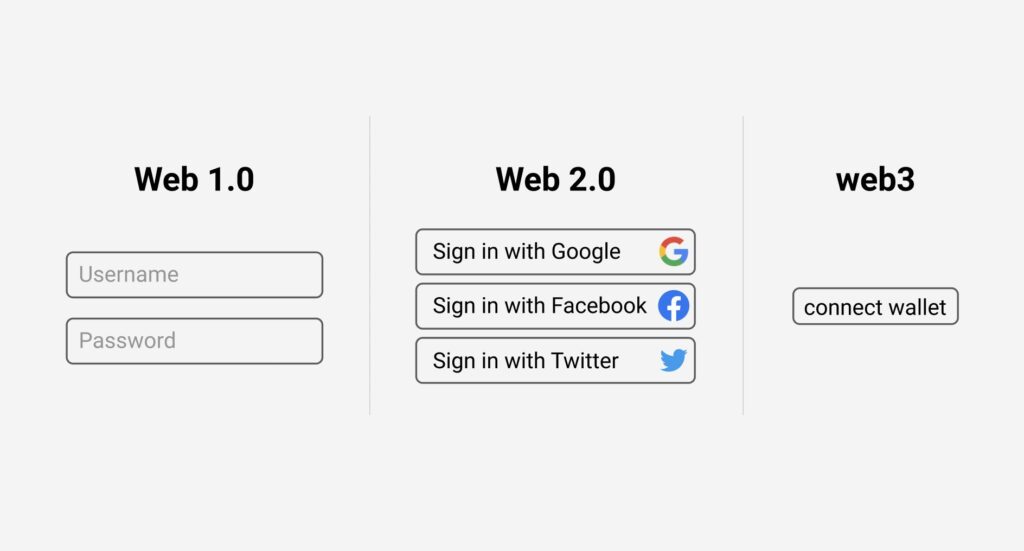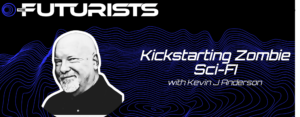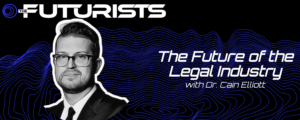
Defining Web3
Cryptocurrencies, NFTs (nonfungible tokens), blockchain, DAOs (decentralized autonomous organizations), the metaverse, decentralized finance (DeFI), decentralized application (DApp). Buzzwords, yes, but they also represent important trends that are shaping the next iteration of the Web, aka Web3, aka Web 3.0.
Web 2.0 was largely recognized as an era of the social web or the web as a platform, combining the “golden triangle” of mobile, social and cloud computing.
Web 3.0 business models are built upon the core concepts of decentralization, openness, trustless networks, powered by encrypted, accountable distributed ledgers.
Cryptocurrencies such as Bitcoin and Etherium, represent digital currencies, encrypted, secure digital assets designed to be exchanged, monitored, and organized by a secure peer-to-peer ledger called a blockchain. Unlike traditional currencies, crypto is not not managed and controlled by a central authority like a bank or government authority.
Each user maintains a cryptocurrency wallet, an app that crypto holders use to store, spend, or exchange their digital assets, including NFTs. A crypto wallet contains pairs of public and price cryptographic keys. Public keys are used to make payments to the address derived from it, for example, one of my public keys is briansolis.eth. A private key enables the spending of crypto from that address.
NFTs represent more than digital art or music minted on the blockchain. Think of them as unique, one-of-a-kind digital assets that have real world value. NFTs are stored on public-facing digital ledgers called blockchains, which means they’re inherently tethered to a recorded history of ownership and worth, ensuring their authenticity. That value can go up or down based on perceived value and market conditions, just like any other asset. The difference is that value can be attached to an NFT beyond asset itself.
You can also imagine NFTs as digital keys to unlock access to other assets, events, communities, experiences, and even professional and economic opportunities. At a basic level, picture a membership with exclusive access. Your NFT is your access card. Your wallet in many ways, becomes your identity.
NFTs will eventually become “soulbound,” which means they aren’t meant to be resold. Starting with diplomas, certificates, even credentials, and eventually your online data and health records, could be stored as NFTs in your wallet. As you interact with other organizations, your soulbound NFT would facilitate exchanges that define personal and professional engagements.
NFTs, tokens, and other crypto-based assets could also be distributed as part of innovative loyalty programs where customers become stakeholders. Or imagine offering physical and digital products as NFTs, authenticated and minted on a blockchain during every sale or resale. Homes, cars, luxury goods, rare wines, can now all be tied to distributed systems of record that guarantee authenticity, linked to a historical value chain, providing individual ownership without any one centralized group facilitating each transaction.
DAOs are Web3 collectives that operate with specific purpose. Think of DAOs as a business classification such as an S-Corp or LLC, run by coin or token holders. Each offers certain rights, such as specific areas of management or voting. Some refer to DAOs as a crypto co-op or financial flash mob. The point is that a DAO is run by its members for a common purpose, for example investing in startups, crypto, NFTs, and other assets. In many cases, a smart contract are custom algorithms that govern the infrastructure of decision-making and operations outside of stakeholder engagement.
For example, Friends with Benefits ($FWB), is considered a social DAO where members purchase $FWB to gain access to the club at varying levels. FWB has been compared to a decentralized version of SOHO House, making it a digital VIP club for crypto’s creative class.
This is just the beginning.
Everything—art, banking, insurance, healthcare, government services, etc.—can be reimagined as value-added goods and services that are owned by a shared group rather than a traditional company structure. Imagine, in just one case, an employee-owned business, where you as a customer, also become a stakeholder in the organization. You can have a say in the development of the rules and policies, prices and even earn dividends.
Stay tuned for updates…
Source:
Wall Street Journal
“10 Tech Events of 2021 That Will Shape the Future”
When the next decade dawns, we’ll look back on this year as a pivotal one for businesses. A futurist explains why.
by Brian Solis

Brian Solis | Author, Keynote Speaker, Futurist
Brian Solis is world-renowned digital analyst, anthropologist and futurist. He is also a sought-after keynote speaker and an 8x best-selling author. In his new book, Lifescale: How to live a more creative, productive and happy life, Brian tackles the struggles of living in a world rife with constant digital distractions. His previous books, X: The Experience When Business Meets Design and What’s the Future of Business explore the future of customer and user experience design and modernizing customer engagement in the four moments of truth.
Invite him to speak at your next event or bring him in to your organization to inspire colleagues, executives and boards of directors.






Leave a Reply